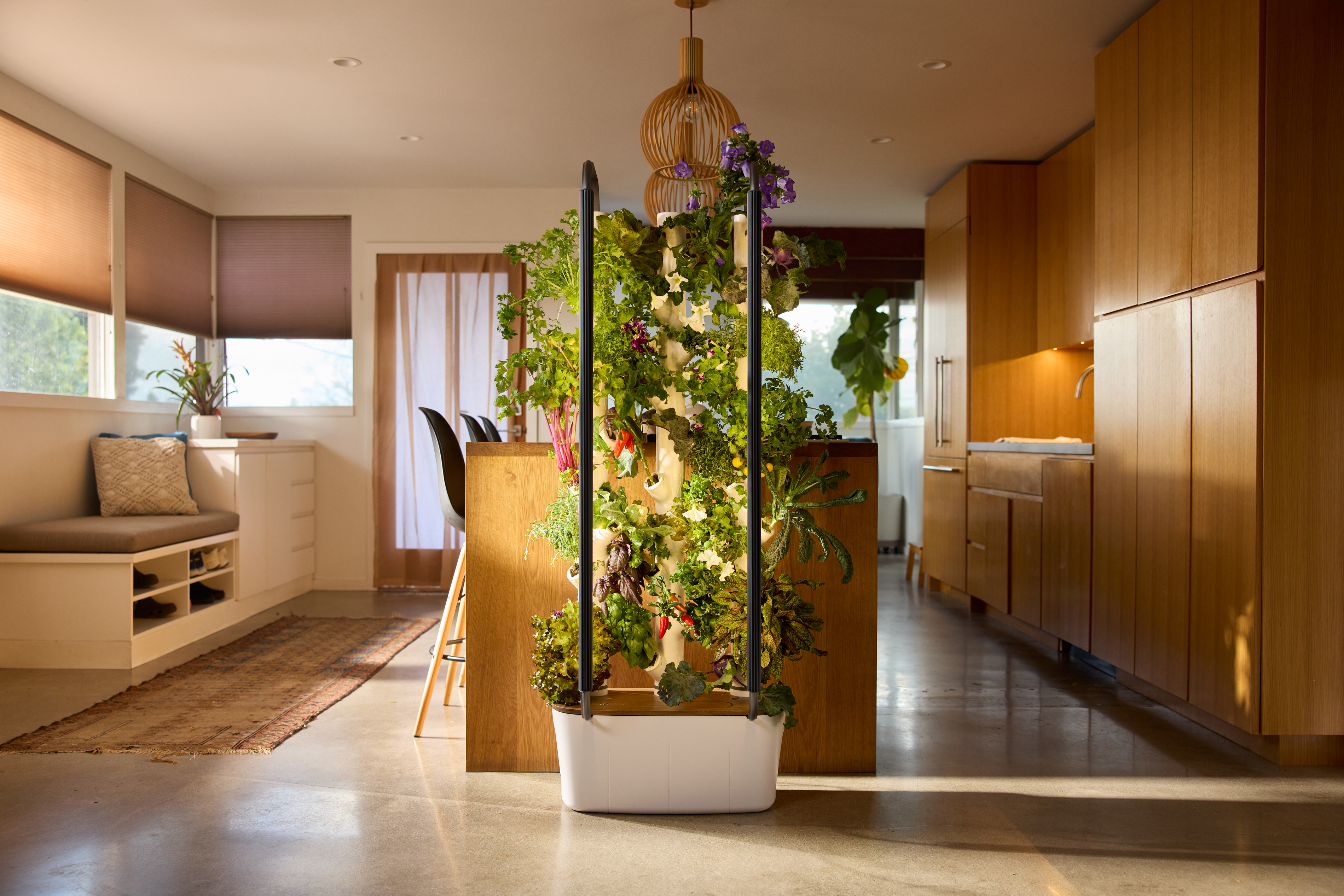
Popular in the 70s, self-sufficiency has seen a new resurgence, with many people turning their hands to growing their own fruit and vegetables. Even those without gardens or outside space can get in on the act with indoor plant growing systems.
These systems generally operate hydroponically (with nutrients added to water rather than with soil) and with grow lights. This means food – or flowers and house plants – can be grown indoors unaffected by the weather or seasons–and without pesticides.
There are numerous sizes and styles available too, from small countertop systems to larger floor-standing planters, tall shelving units and living walls. Many systems can be synced to an app too, so you can keep tabs on your indoor garden crops and be alerted when they are ready to harvest.
We've outlined the various types on offer, so you can choose which indoor plant growing system is best for you.
1. Countertop
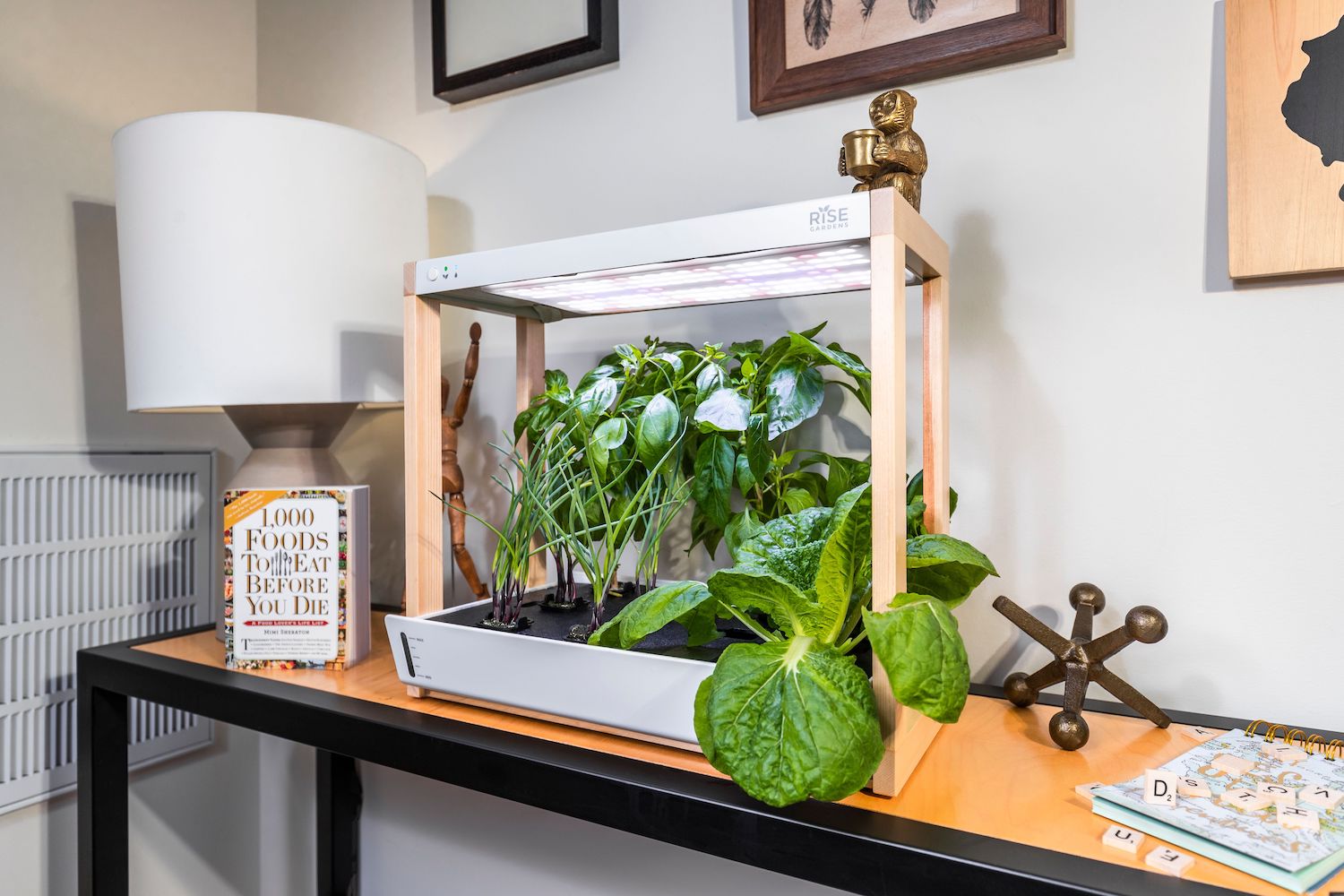
There are numerous compact countertop indoor plant growing systems on the market. These are best for beginners and those with small spaces and big appetites when it comes to their indoor vegetable gardens. They tend to be hydroponic systems with LED grow lights, so will need to be plugged into an electrical outlet.
Most of these systems, such as the Personal Rise Garden (18"x16"x11"), Click&Grow Smart Garden 9 (24"x16"x7") or the AeroGarden Bounty (34"x17.25"x11.25") have space to grow between 9-12 plants at a time - which we are advised, grow five times faster than in soil. That's a fair amount of produce from a petite plot.
As well as growing lettuce, salad leaves, tomatoes, chillis, herbs and other fresh produce, you can grow flowers in some too, if you fancy an indoor cutting garden.
'We offer over 75 different varieties of crops you can grow indoors,' says Angelo Kelvakis, head of Research + Development, Rise Gardens. 'From little greens like lettuce, pak choi and arugula to kale, collards and cabbage. As well as fruiting plants like tomatoes, strawberries, eggplants, and peppers; plus herbs, rooted vegetables, vining crops, microgreens and edible and non-edible flowers.
'If you are growing your own food, not only will you know exactly what has been put into growing it, but you will also be able eat it at the moment of harvest, ensuring it is at its highest nutrient density.'
2. Wall-mounted
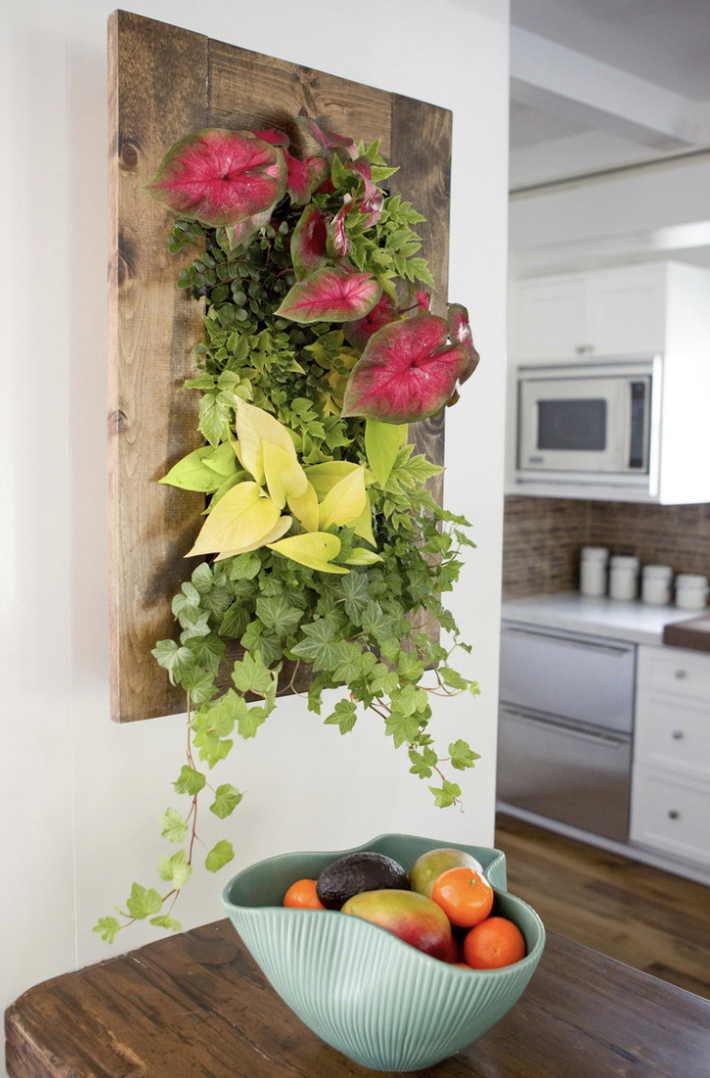
If kitchen countertop space is an issue in your kitchen, or you like the idea of a vertical garden, there are wall-mounted growing systems too. These vary, from models with smart timber frames to those with tiered felt pockets, cylindrical planters and more.
Each of these wall-mounted models can be filed with decorative house plants, succulents or even herbs and salad leaves. Although, if you're opting for models made with recycled plastic, it's best to grow plants you don't intend to eat, for obvious reasons.
Most models include an irrigation system or water reservoir, but on some it's optional, so you have the option to use them outdoors too, if you wish.
These systems don't always have grow lights, so are best placed near a window or where there is a light source.
3. Shelf systems
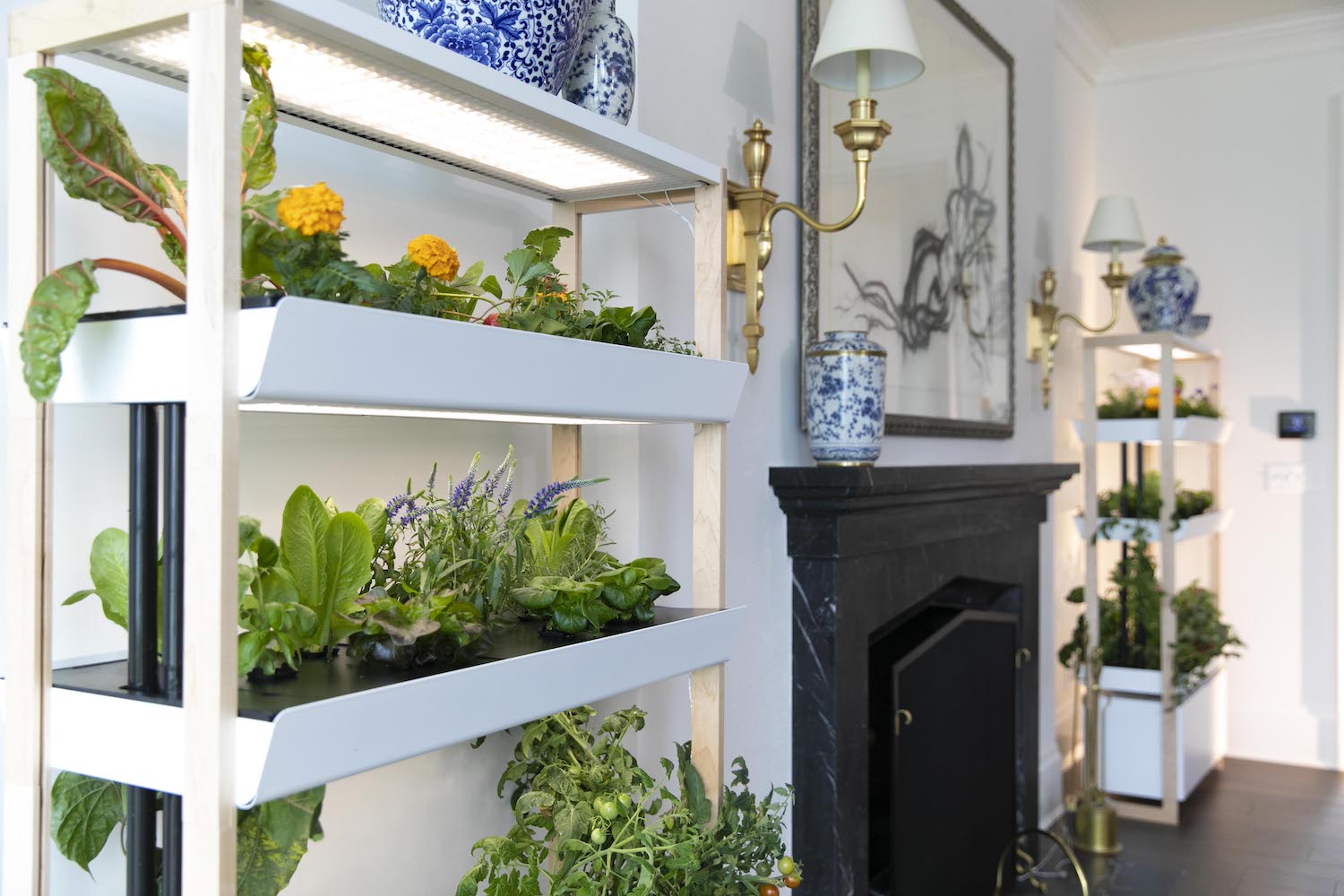
For serious food producers, or plant lovers, there are hydroponic shelving systems with LED lights that can be floor-mounted and filled with your favorite foliage — or lunch options.
The award-winning hydroponic gardening Rise Garden, which retails for around $1,159, has room for over 100 veggies, fruits or herbs. It's a modular system too, so you can start with one level and stack up to three, as your green thumb-or appetite grows. It can be synced to an app too, so you receive reminders about your crop's care requirements and harvest times.
'Our Garden grows salad in under 30 days,' says Angelo. 'Rise Gardens are a way to grow year round, with around 90% less water compared to outdoor growing.
'Because they come with built in lights, you can place your Garden almost anywhere in your home. Although we do recommend having it relatively close to a sink, as it makes filling it up every week easier. It will also need to be cleaned every four to six months.'
4. Column kits
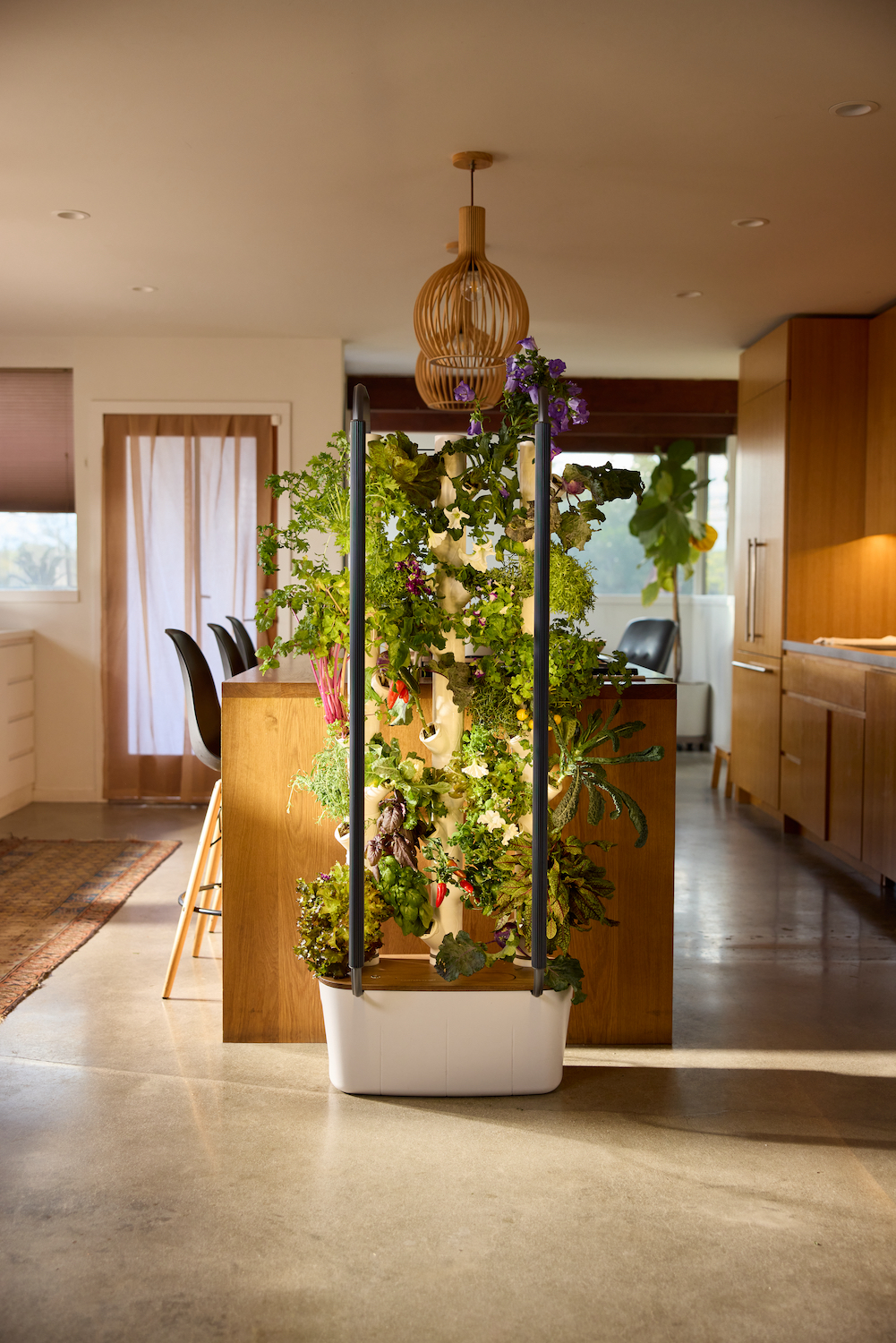
An alternative option if you'd like a vertical system which takes up minimal space is a kit with columns. The Gardyn Home Kit is another award-winning innovation, complete with water tank, LED lights and a camera.
Its columns have pods mounted along them, where you plant seeds, and where fruit and vegetables emerge from. Another plus, is it takes up just two feet of floor space.
Gardyn can also be synced to an app, complete with an AI garden monitor called "Kelby", which alerts you if your veggies need nutrients, topping up with water or are ready to harvest. The system can even placed in "vacation mode", so veggie growing can be paused if you're away. Like other models, it requires assembling and regular cleaning.
'Being able to grow vertically without soil, changes the scale of food we can produce,' says Gardyn founder, FX Rouxel. 'Large quantities of fruit, veg and herbs can be grown all year round on a very small (2ft) footprint.'
5. DIY lighting
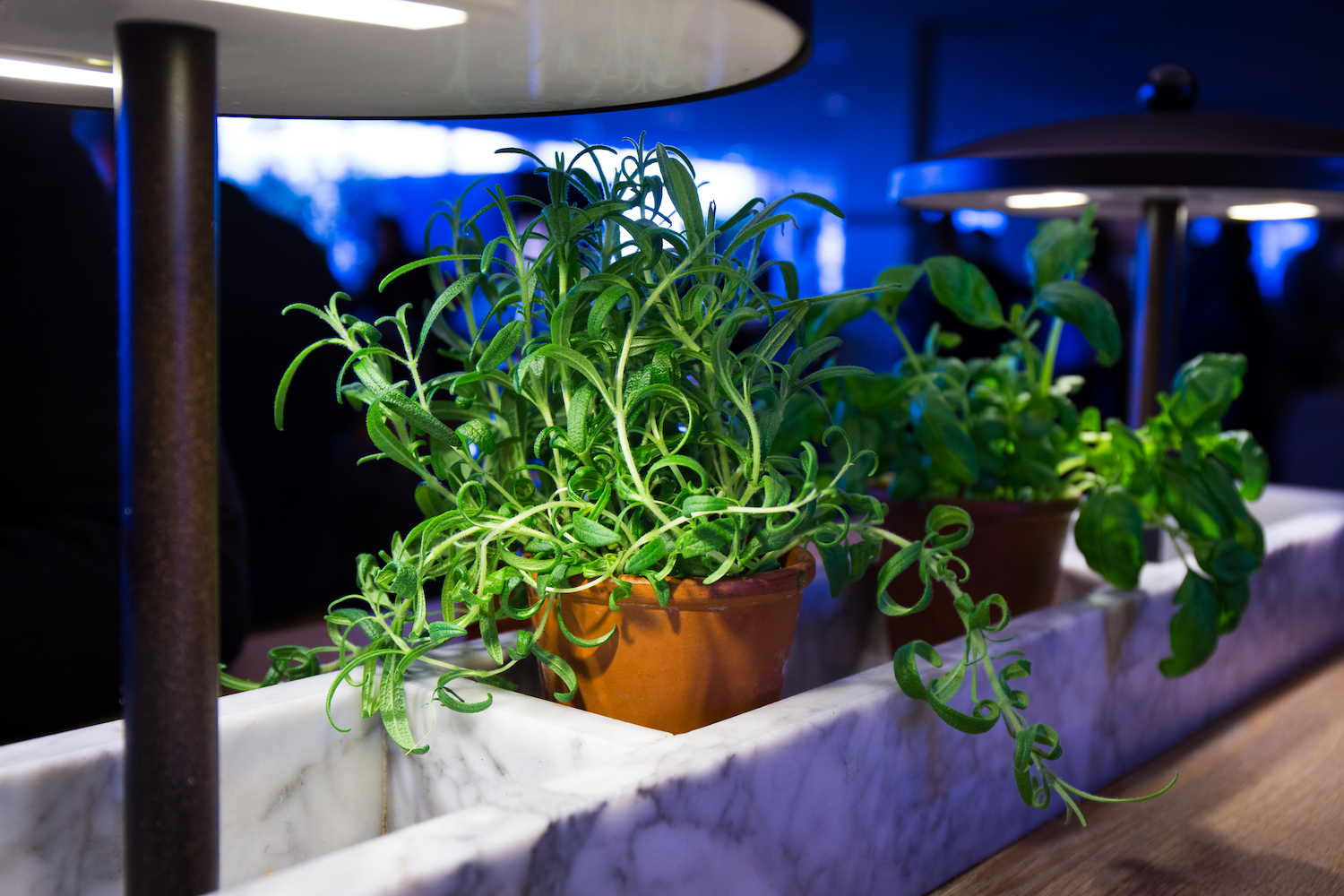
If you prefer growing plants in soil, whether for their flowers, foliage or food, it's entirely possible to set up your own indoor growing system. You just need some lights, but they need to be the right type.
'Fluorescent light is the most common type of light people use to supplement their plants,' says Lisa Eldred Steinkopf, author of Grow in the Dark. 'Many growers use T-5s or T-8s because they are more energy efficient.
'I installed simple, inexpensive, 18-inch-long fluorescent plant lights under my cupboards so that I can have African violets blooming almost constantly on my countertop, right next to the coffee maker.
'LED lighting are the newest lighting method used for plants; they are much more energy-efficient than fluorescent lights,' continues Lisa. 'While these lighting fixtures are relatively expensive compared to fluorescent lights, they do last much longer and use less energy, as they do not have to be on as long to affect your plants.
'Many newer kitchens have LED lights installed under the cupboards as part of the design, and there are grow lights that can clip on to any shelf to allow you to grow plants essentially anywhere you want them, adds Lisa.'
This is an approach Elizabeth Millard, author of the Indoor Kitchen Garden Handbook has adopted.
'Most under-the-counter fluorescent lighting works well for fostering plant growth too,' says Elizabeth. 'All you need is a small block or shelf that brings the plants closer to that light. I have this set up in my kitchen, and I like to grow herbs in smaller pots so that I can use a little shelf that used to hold dried spices.
'One important note when it comes to lighting: just like people, plants need a night as well as a day. Some growers have tried to boost growth by keeping the lights on at all times, but I’ve found this creates unnecessary stress on the plants because they don’t have time to “sleep.”
'A better strategy, I’ve found, is to turn the lights on in the morning and turn them off about the same time as sunset; in the winter, I’ll keep the lights on longer in the evening, but I’ll be sure to turn them off before I go to bed.'







